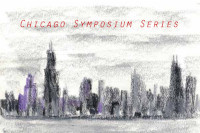Purdue University
Learning science involves explaining observable phenomena, such as stickiness, magnetism, and heat transfer, through imagination and modelling of the underpinning invisible phenomena - molecular interactions, force fields, and energy changes. Visualization of such imperceptible phenomena is the key to making meaning from the abstract scientific shorthand and language that too often alienate novices. Only when they have useful visual mental models of these invisible worlds can novices appreciate the enormous power of mathematics to generalize from the specific.
In this presentation you will see our attempt to portray the molecular level, progressing from visualizing relatively simple chemical systems and reactions in our VisChem project (vischem.com.au) to the exquisitely complex systems and reactions in the cell. Emphasis will be on the need to change the focus of chemistry curricula from the 'cult of the single molecule' to the interactions between molecules to explain chemical principles, and the living chemistry in cells.
Using visualization to teach science should be informed by the latest cognitive science research on the factors determining how the brain perceives, processes, stores and retrieves audiovisual information. Based on a cognitive learning model, we have developed and evaluated a learning design1 that starts with an engaging, observable phenomenon (ideally generating 'cognitive dissonance'), then explicitly brings any misconceptions to the surface through storyboarding. Only then are the visualizations presented to amend or refine their storyboard, and enable satisfying explanations of the phenomenon at the molecular level. After this, the abstract symbolism of formulas and equations make more sense, and mathematical expressions become empowering.
Roy Tasker is currently Professor of Chemistry at Purdue University. He teaches freshman chemistry and graduate courses in chemistry education, and his research interests are in how and what students learn through visualization of scientific phenomena. Until August 2015 he was presenting national workshops on evidence-informed visualization in science education at universities in Australia and the US as part of his Australian National Senior Teaching Fellowship. In 2011 he received The Prime Minister's Award for Australian University Teacher of the Year.
Research, Development and Consultancy Roy produced a suite of molecular-level animations in his collaborative VisChem project (vischem.com.au) that have been adopted by educators and textbook authors internationally. The VisChem Learning Design was then developed as a best-practice constructivist strategy for using these animations to assist students to build their own mental models of the molecular world, and understand chemistry in a deeper way.
He is a consultant for universities in Australia and Singapore interested in moving away from passive delivery of information in face-to-face contexts, to interactive, evidence-based teaching. This involves developing learning designs, informed by an evidence-based cognitive model for how we learn, and mediated using wireless student response technology, and data mining analytics, to monitor learning gains and affective factors.
Academic and Professional Background After Roy graduated from the University of Queensland in 1978 with a BSc(Hons) degree and a DipEd he moved to New Zealand where he obtained his PhD in synthetic inorganic chemistry at the University of Otago in 1982. Following postdoctoral positions at the University of Tasmania and the University of Adelaide, he was appointed as a Foundation Lecturer at the University of Western Sydney in 1985. He worked there until his move to Purdue in 2015.

